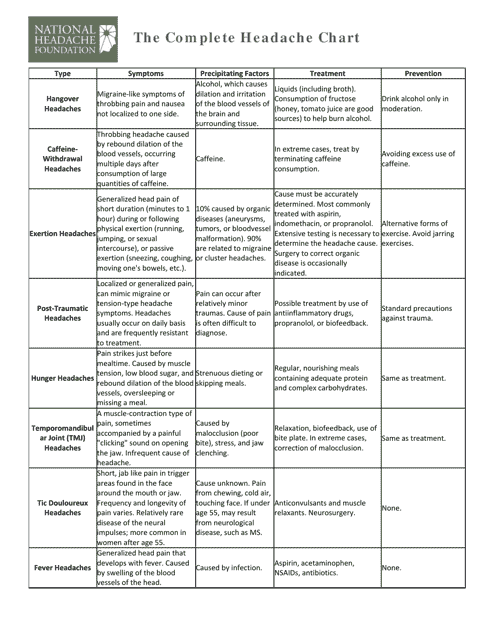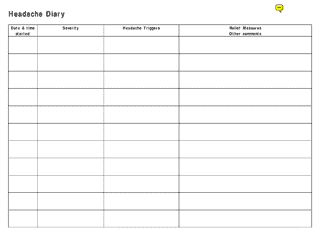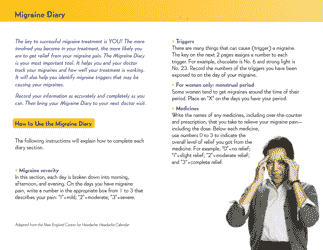Headache Chart
A Headache Chart is used to track and monitor the frequency, intensity, and duration of headaches. It helps individuals and healthcare professionals identify patterns and potential triggers for headaches, such as stress, diet, or hormonal changes. By noting the details of each headache episode on the chart, individuals can gain a better understanding of their headache patterns and make informed decisions regarding treatment and prevention strategies.
FAQ
Q: What are the common causes of headaches?
A: Headaches can be caused by various factors such as stress, tension, lack of sleep, dehydration, certain foods, sinus congestion, eyestrain, or medical conditions like migraines.
Q: What are the different types of headaches?
A: There are different types of headaches including tension headaches, migraines, sinus headaches, cluster headaches, and hormone headaches.
Q: How can I prevent headaches?
A: To prevent headaches, it is important to practice good lifestyle habits like getting enough sleep, managing stress, staying hydrated, avoiding trigger foods, practicing relaxation techniques, and maintaining a healthy diet.
Q: When should I seek medical attention for my headaches?
A: While most headaches are harmless, there are instances when medical attention should be sought. Seek medical help if your headaches are severe, sudden, accompanied by other symptoms like fever or confusion, or if they are interfering with your daily life.
Q: How can I treat a headache at home?
A: Common home remedies for headaches include taking over-the-counter pain relievers, applying a cold or hot compress, practicing relaxation exercises, getting enough sleep, drinking plenty of water, and avoiding triggers.
Q: Can headaches be a symptom of a serious condition?
A: In some cases, headaches can be a symptom of an underlying serious condition such as a brain tumor, aneurysm, or meningitis. However, it is important to note that most headaches are not indicative of a serious problem.
Q: Are there any natural remedies for headaches?
A: Yes, there are several natural remedies that may help alleviate headaches, such as drinking ginger tea, applying peppermint oil, using essential oils like lavender or eucalyptus, practicing acupuncture or acupressure, or trying relaxation techniques like yoga or meditation.
Q: Can certain foods trigger headaches?
A: Yes, certain foods and beverages like chocolate, caffeine, aged cheeses, processed meats, alcohol, and foods with high levels of MSG (monosodium glutamate) may trigger headaches in some individuals. It is recommended to keep a food diary to identify and avoid personal triggers.
Q: What is a migraine and how is it different from a regular headache?
A: A migraine is a type of headache characterized by severe pain, usually on one side of the head, along with other symptoms such as nausea, sensitivity to light and sound, and visual disturbances. Unlike regular headaches, migraines can last for hours or even days.
Q: Are there any medications available for treating migraines?
A: Yes, there are over-the-counter pain relievers like ibuprofen or aspirin that can help with mild migraines. However, for moderate to severe migraines, there are prescription medications available that target specific migraine symptoms or help prevent migraines altogether.








